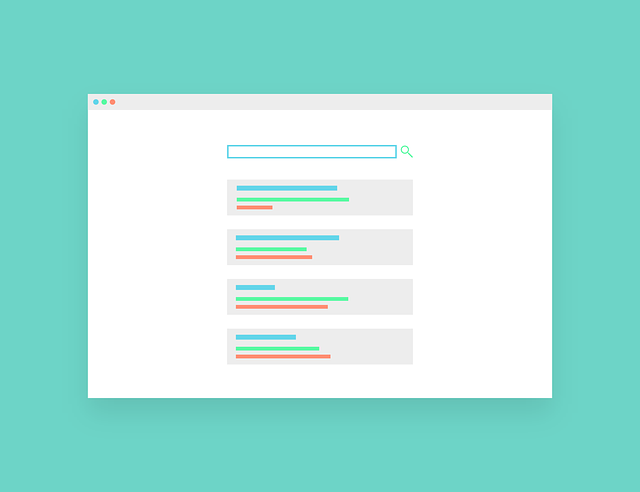Competitor SEO analysis is a strategic process using rival online strategies to gain industry insights and achieve a competitive edge. It involves scrutinizing Technical SEO techniques, keyword optimizations, backlink profiles, and content approaches, revealing market trends, best practices, and areas for improvement. This analysis shapes your own Technical SEO strategy, inspires engaging content, enhances user experience, and signals search engines of your site's reliability. Key steps include identifying competitors through digital landscape mapping, analyzing on-page optimization, keyword research, backlink profiles, and site architecture. Utilizing modern tools automates data gathering and interpretation, enhancing content optimization and improving organic search performance through effective Technical SEO Techniques.
Competitor SEO analysis is an indispensable strategy for any business aiming to dominate search engine results. By scrutinizing your rivals’ online presence, you can uncover valuable industry insights and develop a robust SEO plan. This comprehensive guide explores essential aspects of competitor analysis, focusing on technical SEO techniques as the cornerstone of your strategy. From identifying key competitors to analyzing backlink profiles and optimizing for mobile, each step ensures your site excels in today’s digital landscape.
Understanding Competitor SEO Analysis: Unlocking Industry Insights

Understanding Competitor SEO analysis is a powerful tool for unearthing industry insights and gaining a competitive edge. By examining your rivals’ online strategies, you can uncover their Technical SEO techniques, keyword choices, backlink profiles, and content strategies. This process offers valuable lessons on what works well in the market and where there might be gaps or opportunities for improvement.
It involves a detailed look at their website’s structure, indexing, loading speed, mobile optimization, and overall user experience—all crucial aspects of Technical SEO. Analyzing these elements allows you to identify best practices and potential issues that could affect your own search rankings. Moreover, understanding competitor content strategies can provide ideas for creating more effective content that resonates with your target audience.
Technical SEO Techniques: The Foundation of a Robust Strategy

Technical SEO techniques are the unsung heroes behind any successful online presence. These strategies form the very foundation upon which your website’s visibility and performance rest. By ensuring your site is crawlable, indexable, and compatible with search engine algorithms, you unlock a world of opportunities to rank higher and attract more organic traffic.
A robust Technical SEO strategy involves optimizing crucial aspects like site speed, mobile-friendliness, secure connections (HTTPS), XML sitemaps, and robots.txt files. These elements collectively contribute to an improved user experience, which is a key factor in search engine rankings. Investing time and resources in refining these techniques can significantly impact your website’s search visibility, making it an indispensable component of any competitor SEO analysis.
Identifying Key Competitors: Mapping Your Digital Landscape

Identifying your key competitors is a crucial step in any comprehensive SEO strategy. Start by mapping out your digital landscape using advanced search engine tools and analytics platforms to uncover potential rivals who target similar keywords and audience segments. This process involves delving into competitor websites, analyzing their content strategies, backlink profiles, and on-page optimization techniques. By examining their Technical SEO Techniques, you can gain insights into their technical capabilities and identify gaps or areas for improvement in your own site’s infrastructure.
Understanding your competitors’ online presence allows you to position your business effectively. It helps you recognize industry trends, successful content formats, and emerging keywords. Mapping this landscape enables you to make data-driven decisions, ensuring that your SEO efforts are targeted, efficient, and competitive.
On-Page Optimization: A Deep Dive into Competitor Strategies

On-Page Optimization is a crucial aspect of any successful SEO strategy, and understanding your competitors’ approaches in this realm can provide valuable insights. By performing a deep dive into their on-page optimization techniques, you uncover a wealth of information about how they structure their content, optimize titles, meta descriptions, and headers, and implement internal linking strategies. This involves analyzing their website’s HTML source code, keyword usage density, and the overall user experience to identify best practices and potential gaps in your own strategy.
Competitor analysis reveals technical SEO techniques that enhance page load speed, mobile-friendliness, and schema markup implementation. It also highlights the creative use of headings, subheadings, and alt tags to improve content accessibility and search engine crawling efficiency. Emulating some of these strategies while incorporating unique, valuable content can help elevate your website’s visibility and user engagement, ultimately fostering a more robust online presence.
Keyword Research: Uncovering Hidden Opportunities

Keyword research is a fundamental aspect of any successful SEO strategy, and it’s where hidden opportunities await. By delving into the right tools and techniques, businesses can uncover valuable insights that will boost their online visibility. It involves not only identifying popular search terms but also understanding user intent behind these queries. This process helps in creating content that aligns with what your target audience is genuinely searching for.
Using Technical SEO techniques, such as keyword gap analysis and competitor keyword mapping, you can identify keywords your competitors are ranking for but you’re not. These insights enable strategic content creation and optimization, ensuring your website caters to the needs of both search engines and users alike.
Analyzing Backlink Profiles: Building a Competitive Edge

Analyzing backlink profiles is a powerful Technical SEO Technique that offers significant advantages in competitive markets. By examining the backlinks of top-ranking competitors, you gain insights into their digital strategies and identify potential areas for improvement in your own campaign. This process involves a thorough investigation of the sources, anchor texts, and quality of backlinks, providing a clear picture of the competitor’s online reputation and influence.
Understanding these factors enables SEO professionals to make informed decisions. You can uncover high-value backlink opportunities, discover relevant industry connections, and even identify potential partnerships or guest blogging sites. This knowledge allows for the creation of more effective content strategies, improved link building campaigns, and a stronger overall competitive edge in search engine rankings.
Site Architecture and User Experience: Lessons from Top Performers

Top-performing sites excel in their technical SEO techniques, which directly impact site architecture and user experience. A well-structured site architecture allows for efficient crawling and indexing by search engines, ensuring all critical pages are discovered and ranked effectively. It involves implementing a clear hierarchy, creating logical sitemaps, and utilizing proper internal linking to guide users and search engine crawlers through the website.
User experience (UX) is another critical aspect influenced by site architecture. Seamless navigation, fast loading times, and mobile responsiveness contribute to a positive UX, encouraging visitors to explore more pages and interact longer. Top sites often employ intuitive design principles, such as easy-to-understand menus, well-placed CTAs, and optimized page layouts, making it effortless for users to find relevant information. These practices not only enhance user satisfaction but also signal to search engines that the site is high-quality and worth ranking higher.
Mobile Optimization: Ensuring Mobility-First Indexing

In today’s mobile-first world, ensuring your website is optimized for all devices is paramount. Search engines like Google prioritize mobile usability when ranking sites, meaning a site that isn’t mobile-friendly could struggle to gain visibility in search results. This is where Technical SEO techniques come into play. Key among these is mobility-first indexing, which encourages developers to design websites with a mobile-first approach, ensuring content, images, and functionality are optimized for smaller screens.
By adopting responsive web design, using AMP (Accelerated Mobile Pages) or other lightweight technologies, and implementing fast loading times, you can enhance user experience across all devices. These measures not only improve search rankings but also boost user engagement and retention, ultimately driving better business outcomes.
Tools for Efficient Analysis: Automating the Process

Performing a competitor SEO analysis is made more efficient with modern tools that automate various aspects of the process. These tools are designed to gather and interpret data, allowing marketers and SEO specialists to gain valuable insights into their competitors’ strategies. By leveraging technical SEO techniques, these automated solutions can scrutinize backlink profiles, analyze keyword rankings, and monitor changes in search engine algorithms.
Some popular options include advanced analytics platforms that offer comprehensive reports on organic search performance. These tools enable users to compare keyword rankings, click-through rates, and user engagement metrics across multiple domains. Additionally, machine learning algorithms integrated into these platforms can predict trends and identify emerging keywords, providing a competitive edge in optimizing content for search engines.
